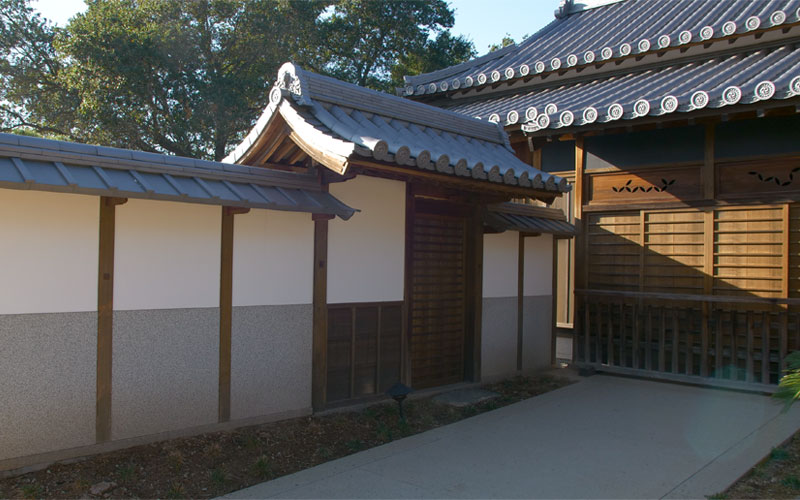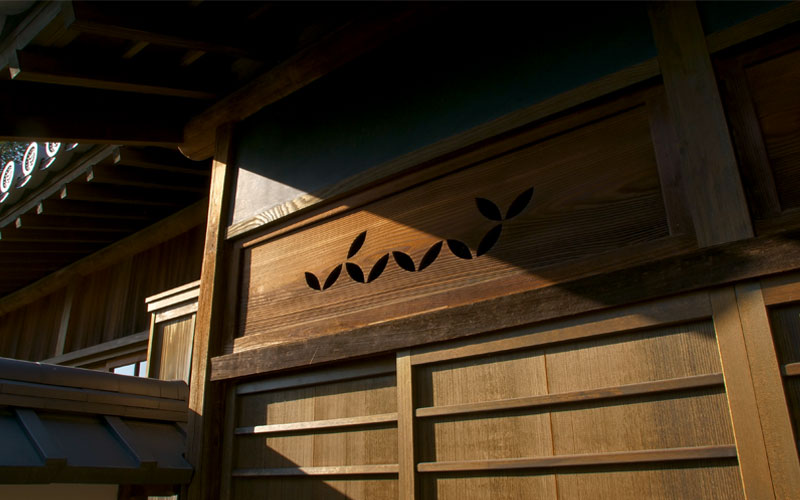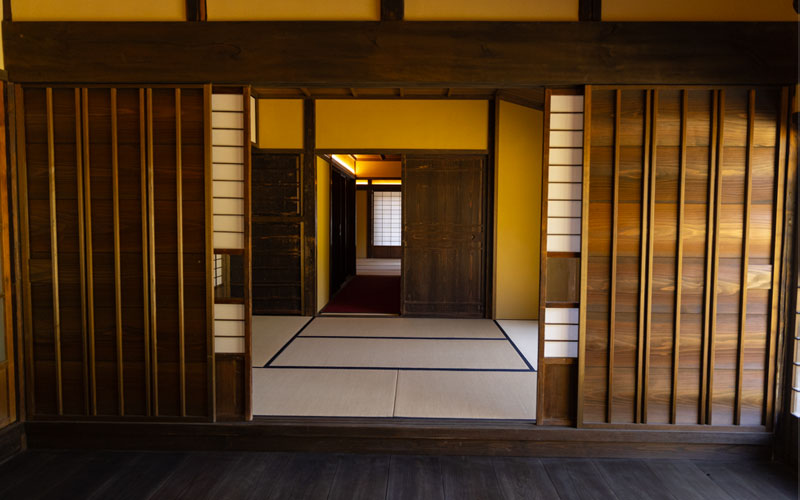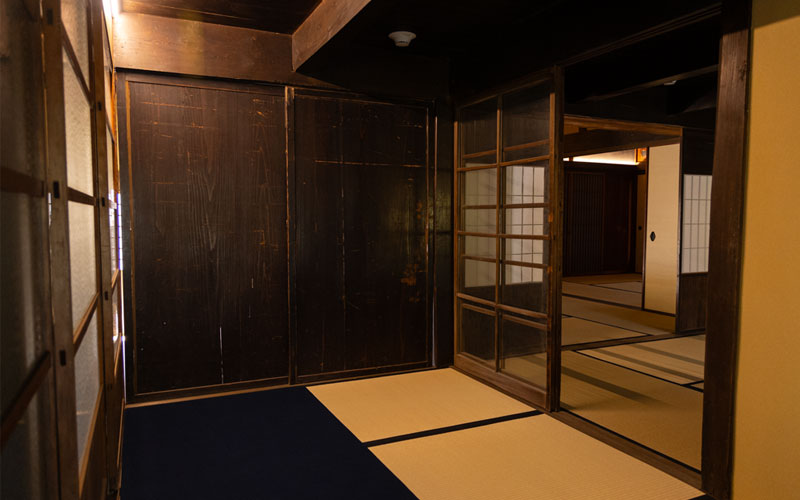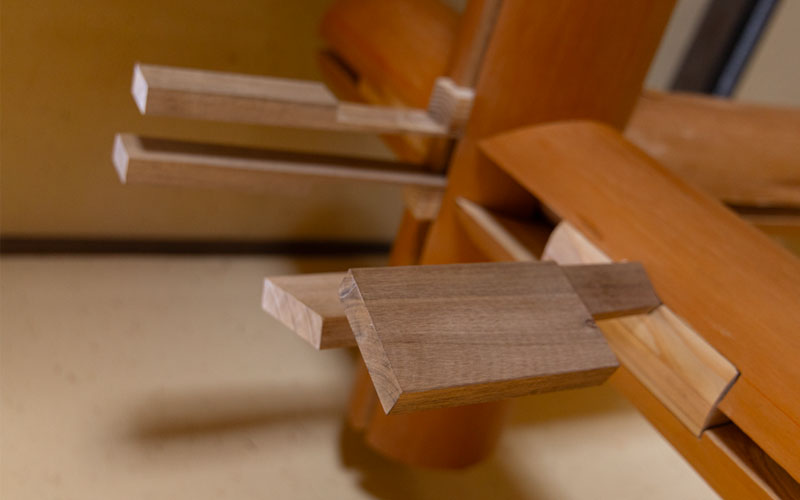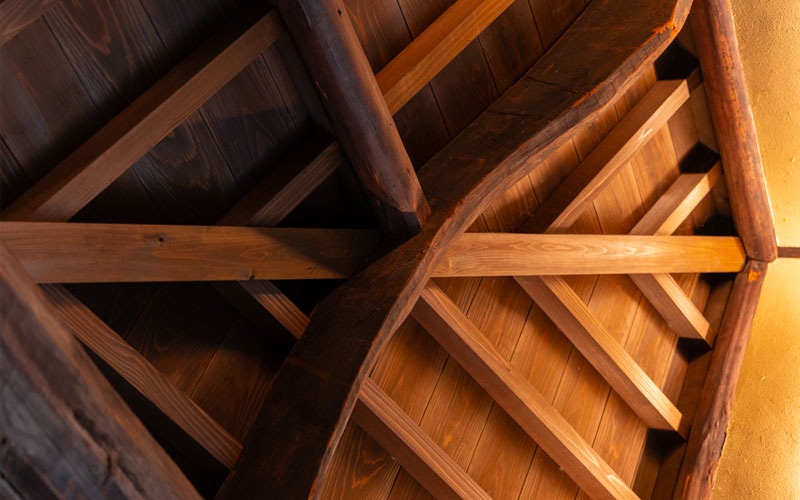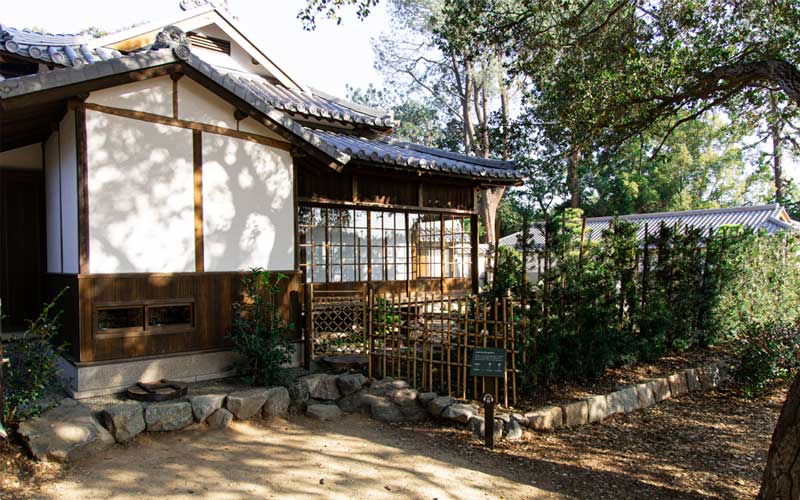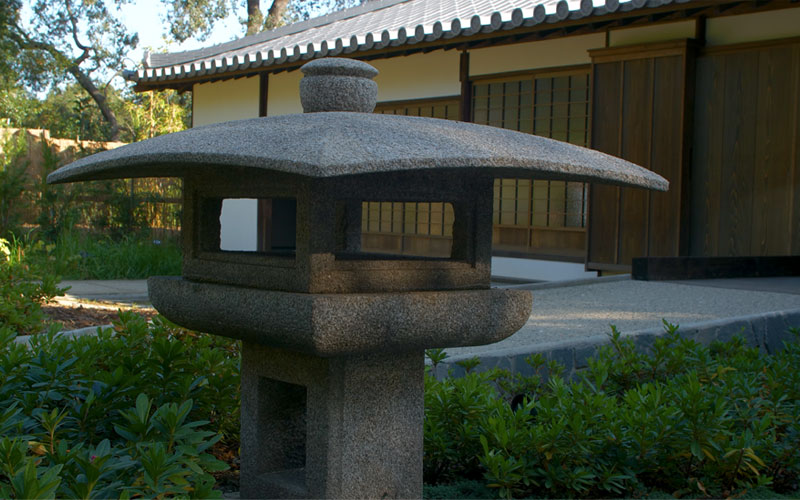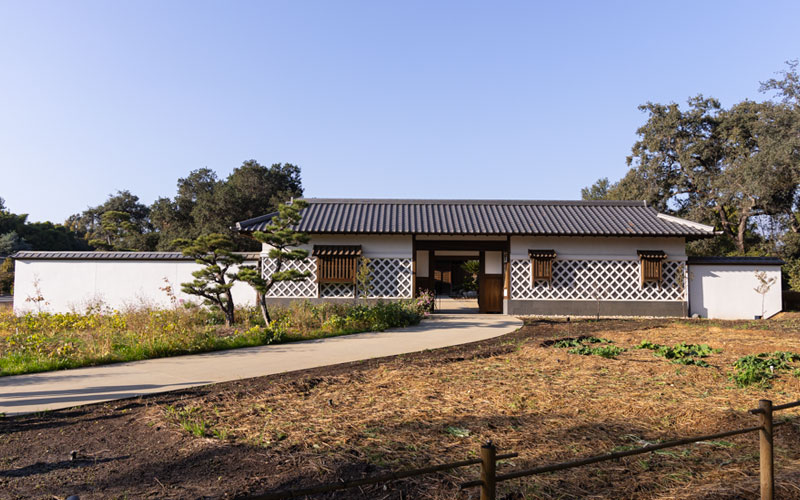
*To watch the video in full screen, please click play and then the YouTube icon on the lower right-hand corner.
In the fall of 2023, Southern California welcomed the “new” arrival of something very old – an authentic, traditional Shōya House transported from Japan that has been restored and exquisitely reconstructed at the Huntington Library, Art Museum, and Botanical Gardens in Pasadena. This 320-year-old house and agricultural compound originally stood in the village of Marugame, in Shikoku, Japan, and long ago served an important function as a Shōya House, the center of village life and local government administration during the Edo period (1603-1868). Now open to the public, the structure is a stunning example not only of traditional architecture of the period, but of a building that played a key part of life and society for a village during the Edo-period.
The Edo period is known for the growth and flourishing of the capital Edo, today called Tokyo, and major developments in culture, commerce, and technological innovation (JAPAN HOUSE Los Angeles has hosted several programs on the art and culture of this era, most recently including the premiere of the documentary film “Edo Avant-Garde”). But it was also an era of massive political, economic, and social changes across an entire nation that was still largely rural. After more than a century of civil war, the Tokugawa Shogunate established power in 1603, ushering in a new era of peace and stability, as well as a complex, top-down political system to manage the country. Known as the bakuhan system, this structure represented a sophisticated and unique form of governance that is sometimes compared to European feudalism, since it combined hierarchical structures with a highly bureaucratic framework. While the Emperor in Kyoto was still the symbolic ruler, with the shogun beneath him, the shogun held political power as he controlled the military and governed the civilian population. Below the shogun were the daimyo, feudal lords comparable to European lords or barons. They controlled the country’s 250 semi-independent domains but swore allegiance to the shogun; they also controlled armies of samurai (similar to knights) who swore allegiance to them and to the shogunate. At the most local level was the shōya, a “village administrator” who would manage a village within a larger region controlled by the daimyo. They were usually chosen for their level of education or other distinguishing factors.

Hence, the “Shōya House” played a pivotal role in the fabric of life in the Edo period – particularly for the farmers who made up the vast majority of Japan’s citizenry of the time. The architecture of each Shōya House itself reflected its functions, serving as both the actual residence of the village administrator, and a sort of hybrid “city hall” / temple / public square / farming center as well. As exemplified in the restored Japanese Heritage Shōya House now at The Huntington, there was typically a walled compound with a gatehouse, as well as a courtyard, gardens, and a Main House. The Main House was where the administrator lived and did business – collecting taxes, keeping official records, and managing other day-to-day government affairs. There were typically two entrances: one for samurai and government officials, and the other for farmers and craftsmen, indicating the class hierarchy. The entire complex was designed with walls to defend against attack, and fire- and water-proof elements, such as clay roof tiles and plastered joints in the wooden construction to repel water or burning sparks. Like most buildings of the time, the Shōya House was constructed with a wooden beam framework, and meticulous wooden joinery (as this was before the use of nails), sliding doors to make the space modular and provide ventilation, and many aesthetic touches such as curved wooden panels and ornate motifs.
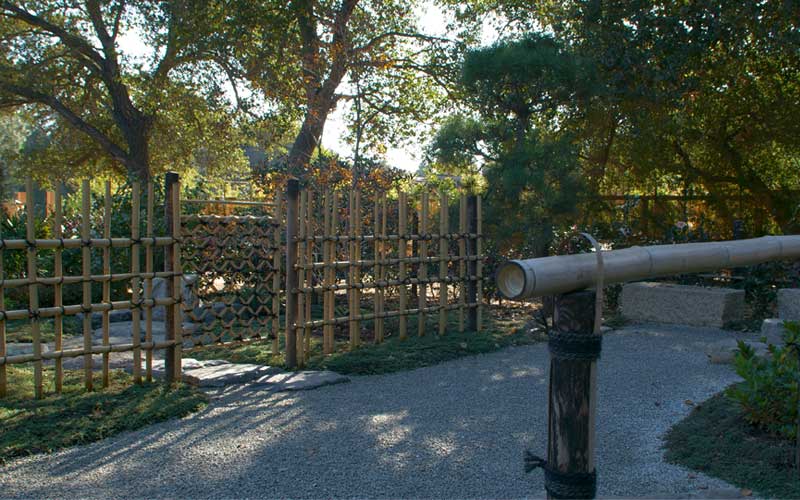
Outside in the courtyard, the entire village would gather for weddings, funerals, religious ceremonies, festivals and other seasonal events, making the Shōya House the heart of local life, and an illustration of the hierarchical, yet interdependent, nature of Edo-period society, with its strict class structure of warriors, farmers, artisans, and merchants (shi-nō-kō-shō). The roles of different classes were well defined – from the samurai (shi) serving as warriors and bureaucrats, to the Shōya who administrated the village and represented it to the national power structure, to the farmers (nō) who produced all the food and raw materials needed by society, to the craftsmen (kō) who transformed those into useful goods, to the emergent merchant class (shō), who would distribute them. The Tokugawa shogunate's policies that attempted to preserve social and political stability in essence granted farmers a respected status, but their lives were intricately tied to the unpredictable forces of nature and were burdened by heavy taxation. Though merchants had been traditionally considered lower class, they rose to affluence and influence during this period. As cities like the capital Edo grew, merchants played more important roles, along with craftsmen and artists whose artistry flourished. But none of the great transformations and culture of the Edo period would have been possible without the backbreaking work of the farmers, and the local units of the villages that were administrated through the Shōya, to power a nation in an age of considerable growth.
This is why the Shōya House remains such an important type of heritage architecture in Japan, and an inspiration for visitors and scholars today. In an age marked by ever greater interconnections between “the local” and “the global”, it is clear that all regions are now interdependent, with the broader community and with our natural landscape and resources. In this context, the Shōya House stands as a fascinating example of how a previous era sought to manage community, governance, and the uncertainties of the natural world.


